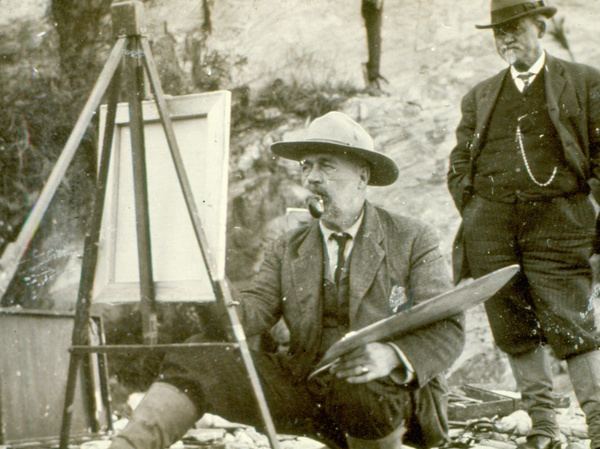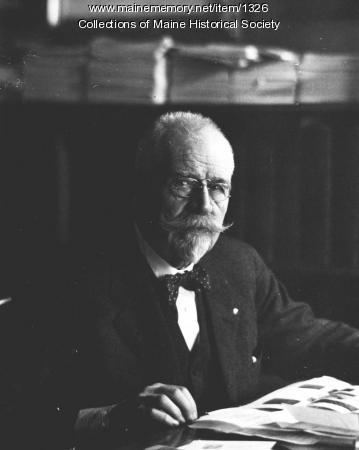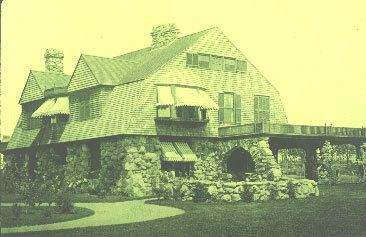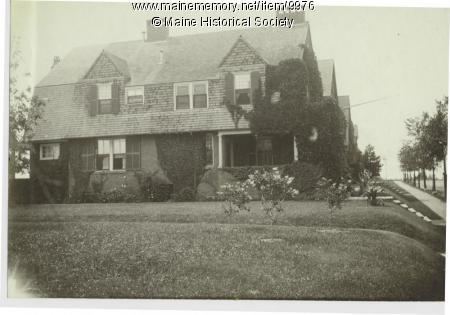Nationality American Occupation Architect | Name John Stevens Role Architect | |
 | ||
Awards Congressional Record of Recognition (2009) Buildings State Street Church, Portland, MERichard Webb House, Portland, MEMunicipal Building, Skowhegan, MEL. D. M. Sweat Memorial Galleries, Portland, MESaco Museum, Saco, MEForest Avenue Post Office, Portland, ME Structures John Calvin Stevens, Winslow Homer Studio, The Blaine House, Bangor Mental Health In, City Theater | ||
John calvin stevens greek revival portland maine real estate for sale
John Calvin Stevens (October 8, 1855 – January 25, 1940) was an American architect who worked in the Shingle Style, in which he was a major innovator, and the Colonial Revival style. He designed more than 1,000 buildings in the state of Maine.
Contents
- John calvin stevens greek revival portland maine real estate for sale
- Maine real estate west end john calvin stevens portland spring street
- Early life
- Career
- Other interests
- Churches
- Libraries
- Houses
- Other buildings
- References

Maine real estate west end john calvin stevens portland spring street
Early life

Stevens was the son of Maria Wingate and Leander Stevens, a cabinet maker and builder of fancy carriages. He was born in Boston, Massachusetts, but when he was two, his family moved to Portland, Maine.

Stevens wanted to study architecture at the Massachusetts Institute of Technology, but lacked the money to attend. Instead, he apprenticed in the Portland office of architect Francis H. Fassett, who in 1880 made him a junior partner to open the firm's new Boston office. Another architect working in the same building was William Ralph Emerson, whose historicist aesthetic in the Queen Anne Style had a profound effect on Stevens. He married Martha Louise Waldron in 1877, and they had four children. Stevens opened his own office in Portland in 1884.
Career

In 1888 Stevens formed a partnership with Albert Winslow Cobb. Together they wrote the book Examples of American Domestic Architecture (1889), an early study of the Shingle Style. Cobb wrote the prose and Stevens provided the illustrations. The partnership was dissolved in 1891. Stevens' son, John Howard Stevens, became an architect and joined his father's firm in 1898. John became a full partner in 1904, and the firm was renamed Stevens Architects.
His most-acclaimed early house — the James Hopkins Smith house in Falmouth Foreside, Maine (1886) — was featured in George William Sheldon's Artistic Country Seats (1886–87). In The Shingle Style (1955), Vincent Scully described the Smith house as a "pièce de résistance" and a "masterpiece", "a more sweeping and coherent version of Stevens' own house". Sheldon also praised his "powerful alterations" to a summer hotel called the Poland Springs House.
Houses designed by Stevens can be found along the Maine coast, as well as in Portland (particularly the West End) and its suburbs. He also designed public libraries, municipal buildings, hotels, and churches, as well as nine buildings for the campus of Hebron Academy, including the Psi Upsilon Fraternity House on the Bowdoin College campus.
In one of his rare commissions outside of Maine, he created a master plan for and designed a chapel and at least six barracks buildings at the National Home for Disabled Volunteer Soldiers (Southern Branch) in Hampton, Virginia.
Other interests
Stevens was a landscape painter. He belonged to the Brushians, a Portland art group which went on weekend outings. He exhibited his work with the Boston Art Club, the Portland Society of Art, and elsewhere. His oil painting Delano Park, Cape Elizabeth (1904) is in the collection of Blaine House, the Maine governor's official residence.
He was an avid art collector. He donated Afternoon Fog by Winslow Homer to the L. D. M. Sweat Memorial Galleries, now part of the Portland Museum of Art.
In 1889, Stevens was named a Fellow of the American Institute of Architects. He died in 1940 and is buried in Portland's Evergreen Cemetery.
In recognition of his architectural contributions on the Portland peninsula, the city declared October 8, 2009 to be John Calvin Stevens Day. The ceremony included a Congressional Record of Recognition presented by the office of Senator Olympia Snowe.
